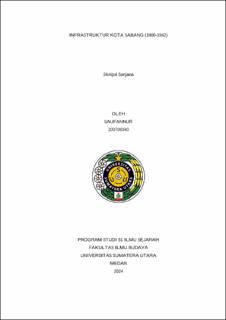| dc.description.abstract | This research investigates the development of infrastructure in Sabang during the Dutch Colonial period from 1900 to 1942. Sabang, as a region of significant historical and archaeological interest, has attracted researchers from various disciplines. However, there has been a lack of in-depth research specifically focusing on the construction of infrastructure in Sabang, particularly from a historical perspective. This study aims to fill this gap by examining in detail the development of infrastructure in Sabang before 1900 and between 1900-1942. The historical method was employed to achieve the research objectives, encompassing heuristic, criticism, interpretation, and historiographic stages. Data was collected through archival research at the National Archives of the Republic of Indonesia and online archives, as well as through a comprehensive literature review. By the late 19th century, infrastructure development in Sabang had focused on port facilities and public infrastructure such as post offices, telegraph networks, and roads. Concurrently, further planning for public infrastructure was underway. Infrastructure development in Sabang became more pronounced in the early 20th century, accelerating rapidly in the 1920s. The infrastructure encompassed various public facilities including roads, airports, clean water systems, mental hospitals, quarantine stations, schools, public toilets, places of worship, and even recreational facilities like swimming pools. The construction of these infrastructures was not solely to meet the local needs of Sabang but also to serve broader purposes, such as the construction of mental hospitals and quarantine stations. Sabang was deemed a suitable location for these facilities. The development of various infrastructures in Sabang was carried out through meticulous planning, considering various aspects. | en_US |


